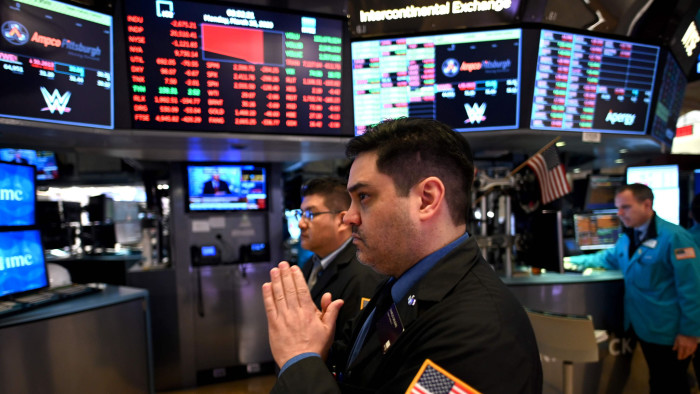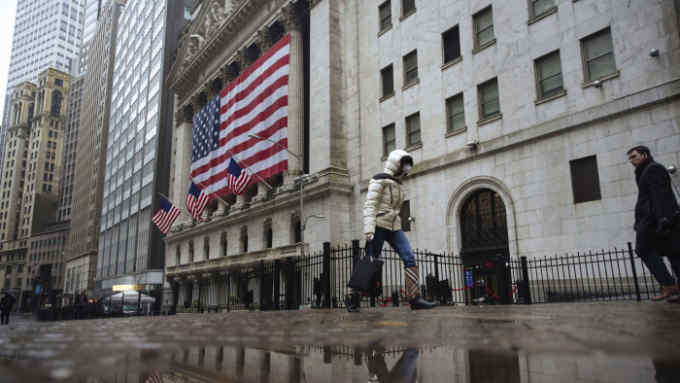Crisis of a lifetime shakes up risk tactics for financial advisers

Roula Khalaf, Editor of the FT, selects her favourite stories in this weekly newsletter.
For 11 years, US investors could mostly treat “risk” as an abstract concept that could be easily traded in for ever-higher returns. The coronavirus pandemic changed that, ending the longest US stock market bull run in history and replacing it with a bear market that throws investment danger into sharp relief.
Some investors reacted early to the market volatility by moving assets into relatively safe investments: the first half of March saw large net outflows of dollars from US stock and bond mutual funds and net inflows into money market funds.
Financial advisers typically caution that such sudden shifts in portfolios may be short-sighted and prefer that their clients focus on the long run.
Even an unprecedented market crash is no reason to toss out one’s entire investing strategy. Advisers note that careful deliberation is vital. For instance, some investors should trim their exposure to stocks, but others should sit tight and wait for markets to recover.
The first step is accepting that some risk is necessary to produce returns. For example, US stocks had an excellent 2019, resulting in a total return of 31.5 per cent for the benchmark S&P 500 — but that included sharp reversals in January, May and August.
“How we talk about risk has some bearing,” says Chris Cooke, principal at Cooke Financial Group, an advisory firm in Indianapolis, Indiana. “These are really difficult discussions. Because the investments that offer decent returns in the long run may offer volatility in the short term.”
That is why a basic tenet of investing is to spread risk among different asset classes that do not typically move in tandem, such as stocks, bonds and cash (also usually diversified among US and non-US holdings). Accredited investors with a net worth of $1m or annual income of at least $200,000 can add “alternative” assets such as hedge funds, private equity and commodities to their mix.
Advisers believe that most investors can embrace the concept of asset allocation. “In theory, investors understand not putting all your eggs in one basket,” says Jan Spielman, an adviser with Quest Wealth Management of Storm Lake, Iowa.
There are myriad ways to allocate assets, however, and they can be combined. Among FT 400 advisers, the most popular method is to build a “core” of lower-risk, passive investments that track market indices, complemented by riskier “satellite” investments. Some portfolios diversify across different types of risk, including volatility and correlation, rather than among asset classes.
And many advisers favour allocating tactically in reaction to market developments, while others use computer-aided “model portfolios” designed for different risk levels.
FT 400 advisers typically use an average of three different portfolio-building methods, including those described and others. Retirement investing can be its own category, where the long timelines lead some advisers to prefer a gradual reduction in equity exposure as a planned retirement date approaches, to reduce volatility as the investor increasingly relies on investment income.
To tailor for risk, advisers sometimes deploy several techniques for different parts of one client’s account. That is important because many investors like to divide investors’ accounts into easily identified “buckets” that represent, say, different levels of risk. Tactical allocation might be right for a “high risk” bucket, but not for a retiree’s “income” bucket.
This kind of compartmentalisation can ease investors’ minds if they know most of their money is in their “low risk” bucket.
Ms Spielman uses buckets based on time horizon, so assets aimed at short-term use are put into shorter-term investments, as an example. “I don’t know if I have any client who can tell you how many large capitalisation stocks they own, but they can tell you how much they have invested for different timeframes,” she says.
These buckets can make the various investment risks more tangible for investors. Traci Richmond, an adviser and co-founder of the Meakem Group in Bethesda, Maryland, finds that most investors worry about the risk of investment losses but not about other risks such as the risk of outliving one’s savings or the risk of inflation sapping their purchasing power.
Like many advisers, Ms Richmond recommends investors keep enough emergency cash to cover at least one year of expenses. Many clients have found that approach helpful this year, she says, knowing that they do not have to sell assets at a loss to access cash.
Even though having a “cash” bucket is a good general principle, the specific risk level in every portfolio has to be customised to the individual. That is why new clients at many brokerages are given questionnaires asking how they would feel about a large loss, what their investment goals are, and other ways to assess how much risk they can stand.
Unfortunately, the extreme test of recent weeks could reveal that some people are poor judges of their risk tolerance.
Of course, the recent market crash is the sort of event that provokes investors to rethink how much risk they want to build into their investment portfolios. But reassessing risk tolerance while markets are plunging may not be a wise long-term move.
“People tend to think very short-term, but investing is about managing long-term risk,” says Dan Egan, managing director of behavioural finance and investing at Betterment, a wealth manager. “Investors should only reassess risk with a cool mind. Don’t deceive yourself into believing that panic is going to be useful.”
If the coronavirus bear market teaches investors anything about risk, it might be that some people overestimated how much risk they are comfortable with in their portfolios. “If investors can’t sleep, that’s stress that we can’t just ignore,” says Ms Richmond. “But people should wait until things normalise before making any big changes.”

Comments